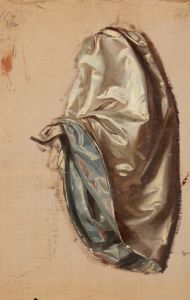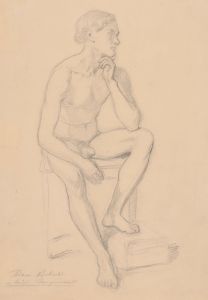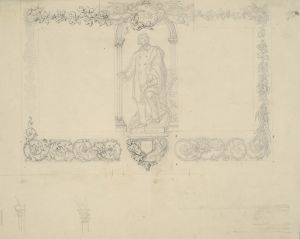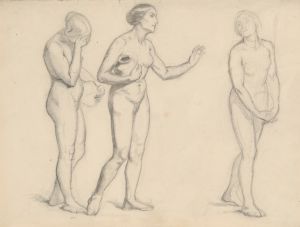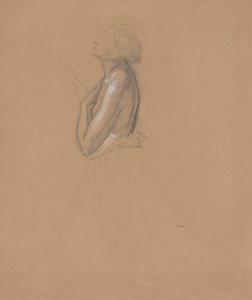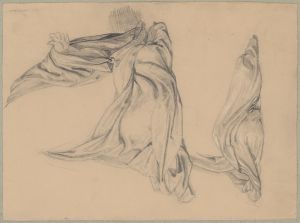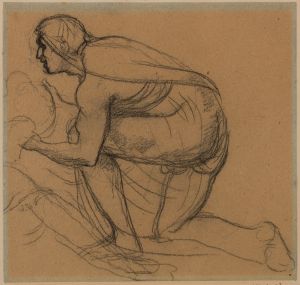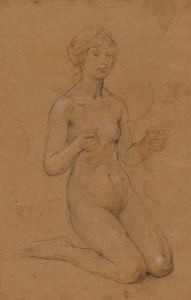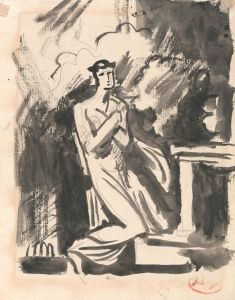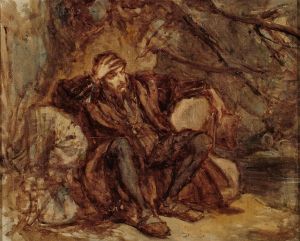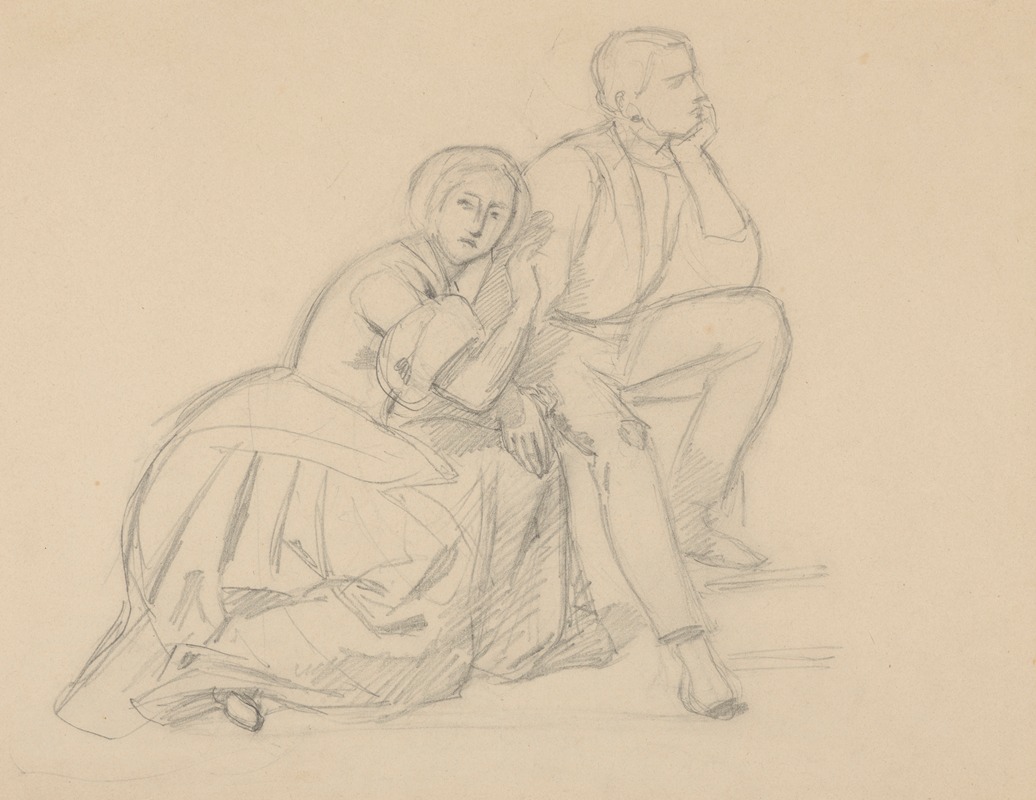
Study of the Prince and a Kneeling Lady for the Painting ‘The Upbringing of Sigismund Augustus’
A hand-painted replica of Józef Simmler’s masterpiece Study of the Prince and a Kneeling Lady for the Painting ‘The Upbringing of Sigismund Augustus’, meticulously crafted by professional artists to capture the true essence of the original. Each piece is created with museum-quality canvas and rare mineral pigments, carefully painted by experienced artists with delicate brushstrokes and rich, layered colors to perfectly recreate the texture of the original artwork. Unlike machine-printed reproductions, this hand-painted version brings the painting to life, infused with the artist’s emotions and skill in every stroke. Whether for personal collection or home decoration, it instantly elevates the artistic atmosphere of any space.
Józef Simmler, a notable Polish painter of the 19th century, is renowned for his historical and genre paintings, often depicting significant events and figures from Polish history. One of his works, "Study of the Prince and a Kneeling Lady for the Painting ‘The Upbringing of Sigismund Augustus’," serves as a preparatory study for a larger composition that illustrates an episode from the life of Sigismund II Augustus, the last Jagiellonian king of Poland.
The study captures a moment in the early life of Sigismund II Augustus, focusing on his upbringing and education, which were critical in shaping his future role as a monarch. The scene typically involves the young prince, Sigismund Augustus, and a kneeling lady, who may represent a figure of authority or guidance in his life, possibly a governess or a noblewoman entrusted with his early education. This interaction highlights the importance placed on the education and moral upbringing of future leaders during the Renaissance period in Poland.
Simmler’s attention to detail and his ability to convey emotion through posture and expression are evident in this study. The young prince is often depicted with a sense of dignity and poise, suggesting his royal lineage and the expectations placed upon him. The kneeling lady, on the other hand, embodies humility and dedication, reflecting the societal norms and roles of women in nurturing and educating young nobles.
The study is characterized by its meticulous draftsmanship and the use of light and shadow to create depth and focus within the composition. Simmler’s technique involves careful observation and rendering of fabrics, gestures, and facial expressions, which contribute to the narrative quality of the piece. This preparatory work would have been essential in planning the final composition, allowing Simmler to experiment with the arrangement of figures and the interplay of light to achieve the desired emotional and historical impact.
Józef Simmler’s works, including this study, are significant for their contribution to Polish national identity and historical consciousness during a time when Poland was partitioned and lacked political sovereignty. By depicting scenes from Poland’s past, Simmler and his contemporaries sought to preserve and celebrate Polish culture and history through art.
While the final painting, "The Upbringing of Sigismund Augustus," provides a more complete narrative, the study itself is a valuable insight into Simmler’s artistic process and his approach to historical subject matter. It reflects the broader 19th-century European trend of historical painting, where artists aimed to educate and inspire through depictions of national history and heritage.
Simmler’s legacy as a painter is marked by his ability to blend historical accuracy with artistic expression, making his works enduring pieces of cultural significance. His studies and paintings continue to be appreciated for their artistic merit and their role in the cultural and historical discourse of Poland.





